
Welcome to Jingletown
Green Day’s ‘clubhouse’ in Oakland, CA has been a secret warehouse hideaway for the band for some time now. But a new (second-hand) SSL console recently changed all that and now the place is a full-blown studio.
Walking in off the street through the razor wire fence into a car park that seems big enough to host go-cart races – which I later discover it occasionally does – you might be forgiven for thinking the industrial premises you’ve just entered manufactures car parts or poker machines or something. Either that or it’s a drug cartel that’s none too keen on visitors. You’d certainly never pick it as the home base of one of the world’s biggest rock bands.
Just over the back fence is a frenetic eight-lane freeway and all around you in nearby businesses, semi-trailers back into giant warehouses, with little regard for people in cars. It’s not exactly tranquil. But hey, this is Oakland, the industrial sister city of San Francisco. If a car comes crashing through the back fence I wouldn’t be surprised.
Right up the back of the warehouse is the first clue that all is not as it seems behind these impenetrable tilt-slab walls. Painted on the modest doorway is a graffiti-styled mural of the guys from Green Day – with all three members pictured sitting down like they’ve just stepped out of the warehouse for morning smoko.
Buzzing the door prompts a quick response. Suddenly the band breaks up – or at least the mural does. Billie Joe and Tré Cool disappear behind the opening door and Mike Dirnt is left on his lonesome wondering what happened. Standing next to him in real life is Chris Dugan, the band’s engineer.
“Come in man,” Chris motions politely. “I’m just in the control room doing some editing.”
With that I enter the Jingletown ‘clubhouse’, the inner sanctum of Green Day’s world, replete with motorbikes, surfboards, more instruments and amps than you can poke a fretboard at, and three studios (at least two with their own control room). If you’re a Green Day fan this is Mecca. One room in particular is filled to the rafters with literally hundreds of guitars and drums – it’s an impressive sight, and immediately my mind is drawn to how complicated the decision must be about which amp to use with which guitar and for which overdub. The options must be paralysing at times for Chris and the band. I had to ask…
Chris Dugan: Actually, not really. Billie [Joe Armstrong] sits and listens to guitar amps for hours on end and he basically knows all his instruments back to front. He has this crazy ear. It’s the same with the other guys in the band. Tré [Cool] sits and tunes his drums like a madman. He knows what heads to use and always wants his drums to sound awesome. He’s fastidious… and a very heavy hitter. The same goes for Mike [Dirnt]. Nothing gets past these guys in terms of their sound. When we get going in the studio all the sounds are already dialled up; I don’t have to worry about any of that stuff really… it all comes from the band. Everyone knows their gig – you don’t really have to say anything to them. As an engineer it’s hard to make sure everything sounds good sometimes – especially instruments – so having fantastic players and great instruments to mic up makes my life just so much easier.
Andy Stewart: Would you say the band and their raw instruments are essentially ‘the Green Day sound’?
CD: Absolutely, it’s what you bring to the table and how you play your instrument that matters most. And they’re so on top of all that stuff. They can play a song in the studio and just nail it, just like they do every night when they’re on tour. But they’re also equally as comfortable cutting tracks individually. Either way, they’re still gonna knock every song out of the park.

TRACKING GREEN DAY
AS: What’s a typical Green Day recording session like for you in terms of tracking. How do songs kick off?
CD: Usually the guys have already worked on a demo at home, so most of the time they’ll come in with an idea already developed, show it to each other, jam it out, play it, and then, if it’s something that they want to proceed with, we’ll have a crack at it. On the last record [21st Century Breakdown] it was kind of a mix of both, whereas on the previous record [the smash hit American Idiot] we were essentially living in the studio for a while and at one point or another everything got miked up: the B3, the pianos… everything. That way it was easy to record anything, anytime. That’s the best thing about having your own space too, of course: we can just set the whole show up and leave it.
AS: Are things fairly set-and-forget once they’re set up or are you constantly moving things around and changing things?
CD: It depends. These guys have a different approach to each instrument, depending on the song. Having said that, for the most part it’s guitar, bass and drums so we’ll generally cut those first, starting with the drums. While we’re doing that, Billie’s always laying down a scratch guitar track. When the drums are finished we usually remove everything, then typically go back and knock out guitars.
AS: Does the band ever track whole takes together?
CD: Yeah, we do. Although, we’re now getting into the habit of going back and getting right into recreating unique sounds at that point anyway. So often the original guitar performances aren’t used. After we listen back Billie will often say, “Hey you know what? I think I might use the other amp for that.” So yeah, even when the band tracks as one, most of the time we still re-cut Billie’s part again anyway.
AS: You never run several amps together so you have choices later?
CD: No, we’ve never really done that. But that’s not to say we won’t in the future! The guys have this little side project band called The Foxboro Hot Tubs and on that record we did everything completely live in the studio. That was really cool and spontaneous. The guys basically wrote the songs right there and then and tracked them live, which was a blast.
AS: They’re all obviously great players. I can’t imagine that they couldn’t just get in there and nail most things pretty easily.
CD: They can and they do. They absolutely do.

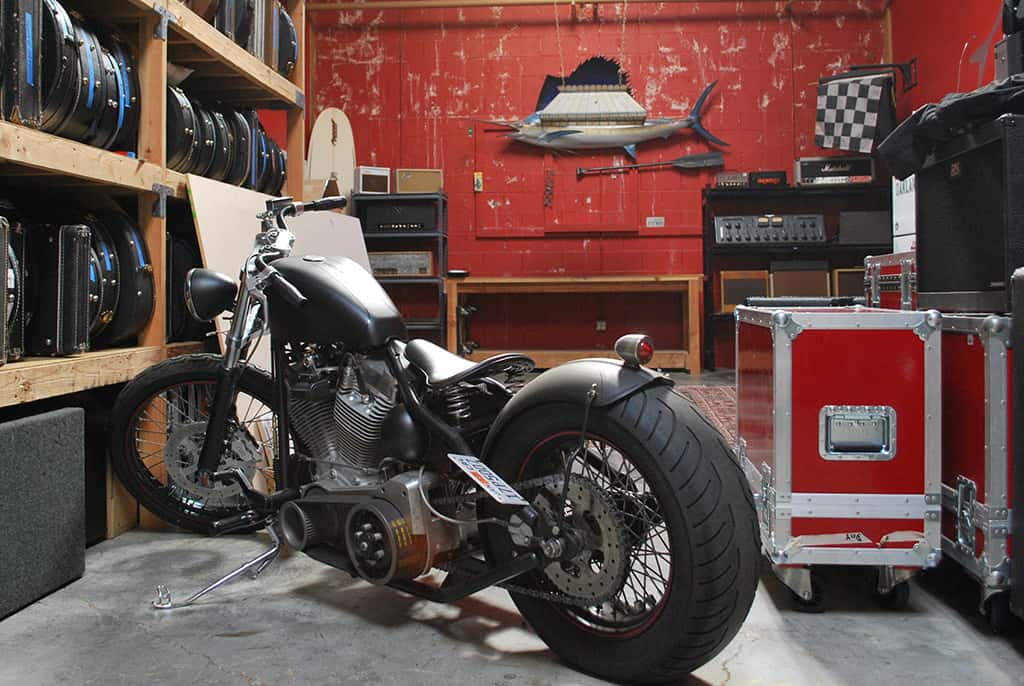
If the phase isn’t quite right in your two mic setup, my trick is to nudge the cabinet around. It’s easier than messing with your mics all the time.
CLICK, CLICK, CLICK, (BANG!)
AS: Can we talk a bit more about your typical recording process for a Green Day song, assuming there’s such a thing? For instance, do they usually start with click tracks etc?
CD: Yeah, I mean if it’s a song they know the tempo of, we’ll usually setup a click… feel it, lift it up or down a few notches and get it right. A lot of stuff on the recent record [21st Century Breakdown] was played to a click track, but not right the way through ’cause the tempo often changed in the chorus. Butch Vig [who produced the album] had a little metronome app on his Mac that was really cool. He would just sit and tap it while we were playing the core tempos for different parts of the song.
AS: So how do you record the famous Green Day drum kit? Do you have a refined approach by now or is the sound of it still open to interpretation?
CD: I don’t really go for ‘a sound’ but perhaps what you’re referring to – what you’re hearing – is just Tré beating the drums the way he does. He’s got the heaviest hands I’ve heard in my life. There are certain drums we just can’t use because he hits so damn hard, which is a good thing and a bad thing… bad for his snare drums that’s for sure. We use Dunnett drums these days that are just amazing. They’re perfect for him. My general approach to the kit is simply to capture it as a whole.
AS: With conventional mics and setups?
CD: Pretty much. On the recent 21st Century Breakdown record I double-miked the toms, which was certainly different to what I’d done before. It was an experiment really, just to see how it sounded. Turned out I absolutely loved it. I’ll probably continue to run with that idea for a while.
AS: Keeping the bottom skins on I assume?
CD: Yep, Tré’s a big double-head kind of guy, so they were all miked much like you would a snare drum. You just flip the phase. The difference in the double-miked sound was particularly noticeable on the floor tom. It was just huge sounding, almost too big – so much more sustain, particularly when the drum was in tune. Actually, in reality, it was a bit of a problem because the note was often too long for the speed of the song. The floor tom was just going boooooom and by the time the sub finally calmed down it was like, “Wow, that’s a lot of low end!” No need to EQ-in extra bottom-end that’s for sure.
AS: I guess it’s the same sort of mentality as two mics on a guitar amp, where you can pretty much EQ the amp with just fader positions…
CD: Exactly, and that’s how we do the guitars too. If there’s no reason to use EQ, I don’t. On guitars, I’ll always put an SM57 up. It’s my standard reference mic, like NS-10s in speaker land. I just put it on and go, ‘Oh okay, if I put a [AKG] 414 or a [Sennheiser MD] 421 on this I won’t have to touch a thing!’ I typically do that with the snare drum too just to get going.
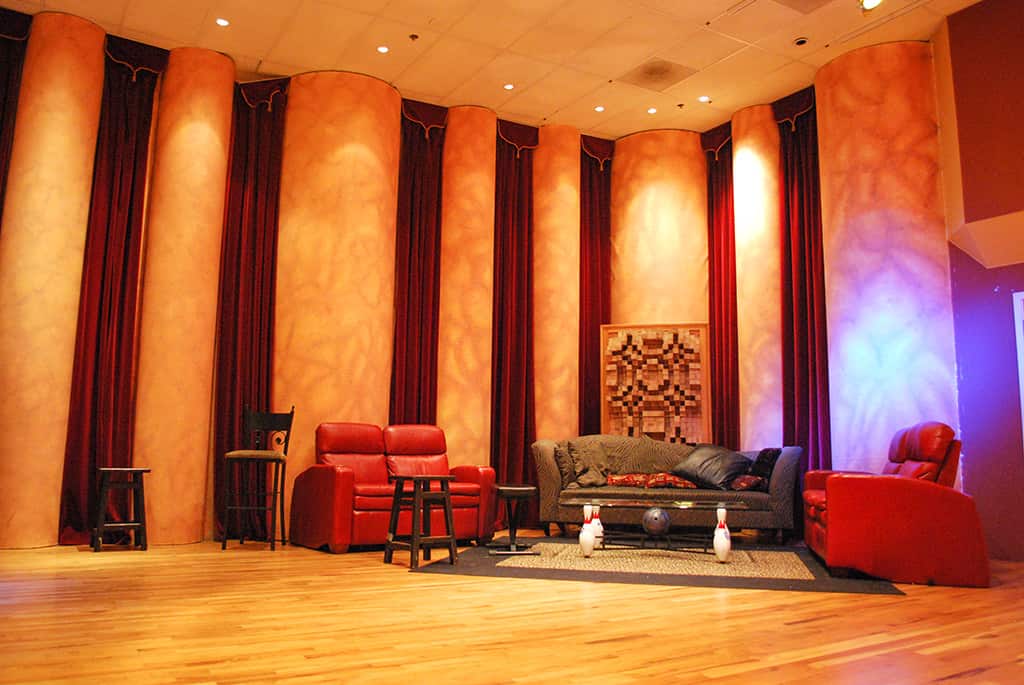
ROOM TO MOVE
AS: Does Tré’s drum kit get miked to hell in terms of room mics?
CD: Certainly on this last record I kind of went overboard because we had the space. We were at Ocean Way in LA. It was my first time working there so I selfishly put up more room mics than I figured we’d ever need. It was more about me listening to the room really than needing the ambient channels, but I didn’t go completely nuts. But funnily enough, when I eventually gave Chris [Lord Alge] the three stereo pairs to use in the mix, I think he used all of them in the end. For fun we flew some RCA ribbon mics way up in the air just for an effect, which was kinda cool.
The main recording space at Ocean Way is deceptive – where you put your mics in the room isn’t where you might expect. It’s a great drum room, almost the perfect room. It just sounds so good – live and big. The funny thing about it is, listening to the drum kit, I almost got caught off guard because it didn’t initially sound as big to me as it did later. My first reaction was to stick my mics at the back of the room, against the advice of my assistant who was going, “Umm… I don’t think you want to go that far.” He was right… the first setup sounded god-awful – just too big. About halfway into the room was the sweet spot.
AS: Were the mics always facing the kit?
CD: All apart from the two RCAs that faced sideways, with their nulls facing the kit.
AS: Do you compress the kit while you’re tracking, or is Tré more of a Dave Grohl-type drummer, where there’s so much consistency in his performance you don’t need to compress things much?
CD: That’s exactly what it’s like. I used to try to compress the kick and snare drum but there’s actually no need to at all. There were a couple of slower songs on 21st Century that we compressed for effect, but only after the recording. For the most part, given the nature of Green Day’s songs, Tré plays like a machine so I tend to just let the drum kit do what it does.
AS: What about signal chains for the kit? I noticed a Neve BCM10 in the other room earlier… is that ever called into action?
CD: BCM10s are usually involved, for sure, whether it’s here or at Ocean Way. Let’s see, on the last record I used a Vintek 1073 preamp for the snare drum, the kick drum chain was just a Chandler TG channel, overheads were 1073s run through these crazy solid-state Pultec-styled EQs called Lang Peq-2s. Toms were all API pres. Room mics were all through 1073s.
AS: Why APIs on the toms?
CD: They’re punchier – at least that’s how I hear them – and they’re nice and clear. I know everyone’s got their own take on all that stuff, but with Tré, because his performance is usually dominated by hi-hat, kick, snare and a lot of cymbals for a good portion of the songs, when they’re hit, the toms need to be absolutely crystal clear.
AS: How do you control cymbal spill into other mics during the recording – Tré seems to be really smashing some of that stuff. Does that ever pose a problem? I’m presuming you’re not putting fake cymbals up or anything like that?
CD: No, though it would be fun to try that with him. But it works out. Tré – and this goes for all the guys – really cares about the process, so if something hinders it or crosses the line I’ll typically say something like, “Hey, I think that cymbal’s just too hot,” and he’ll go, “Cool, I’ve got a quieter one… try this.”
Again, like the guitar collection out there in the next room, Tré’s cymbal collection could quite literally fill this room, and in all honesty and on a very serious note, he’s got a reason why he buys each one and he knows how each one sounds. He’s got quiet cymbals and even quiet hi-hats, which he needs because when he plays he generally murders them, and they used to get into the snare mic constantly.
I found a really great mic to eliminate the hi-hat spill though, which you should try yourself: the Telefunken M80. It’s a vocal mic: it’s super tight, it’s bumped on the top end – though not in an obnoxious way at all – and it’s nice and smooth. We did a shootout one day and Tré was like: “Hey let’s try this one with the fancy grille on it.” It was the obvious winner on the day and I haven’t looked back since…
Generally I find spill is less of a problem when you don’t try and close mic everything too much. I know that sounds ironic, but my general approach with his kit is not necessarily go for a very close mic sound where everything has got its individual sound and you have to worry about bleed. I tend to go a bit more aerial with my mics and overheads become more like spot mics. If you hear him playing, he’s taking all these weird contraptions and forming a balanced sound from it, and that’s really what I’m trying to reproduce – a balanced sound.
AS: What do you do with that remarkable kick drum of his?
CD: I do an inside mic (a Shure Beta 52) and an outside mic (a Neumann U47FET) – pretty standard stuff. I also use one of those Yamaha [SKRM-100] sub-kick things… the 47 is usually back about four and half feet from the kick drum.
AS: Four and a half feet?
CD: Yep, and with no ‘tent’ protection or anything like that. It works out fine. The kick drum Tré used for a great portion of the last record was this big 24-inch Gretsch, with no front head. I’m not a fan of doing that; I love front heads on kick drums. I like the resonance they produce. But this particular drum just had this magical quality. It was enormous sounding.

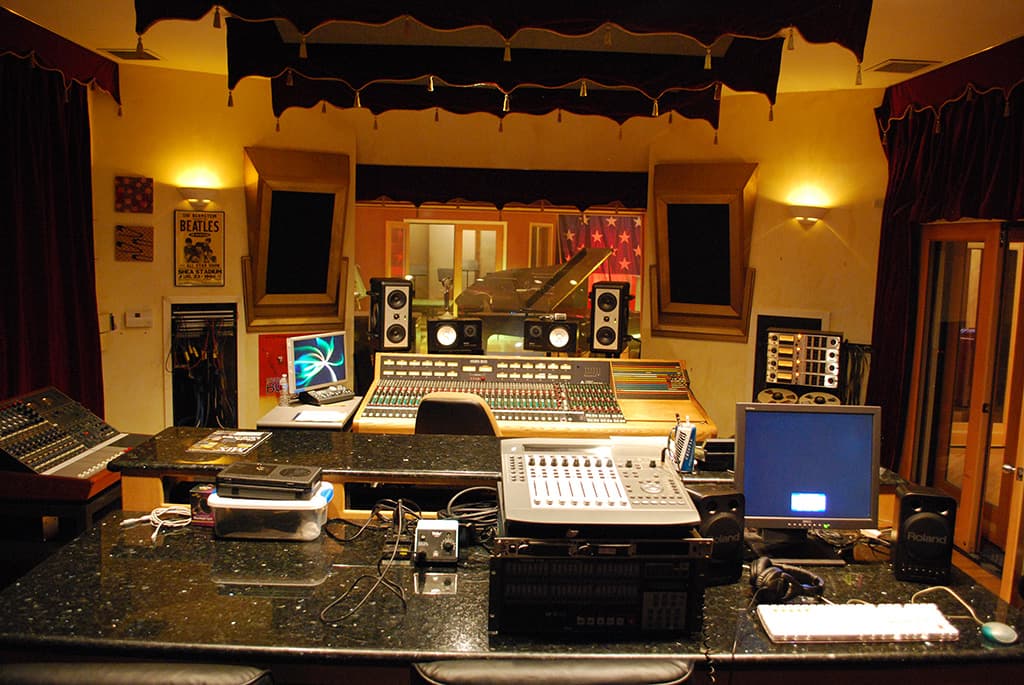
BILLIE JOE’S GUITARS
AS: What about guitars? Some of the sounds you and Billie get are pretty huge. Is there a lot of complexity to what you do to them?
CD: No, I don’t do much. There’s no science behind it – nothing weird going on as you’ve probably surmised by now. It’s all about his amps. They’re amazing. He’s got these old Marshalls that we’ve been running of late: a 100W cab and a 300W cab. On the 100W cab I’ve been running a [Shure SM] 57 and a Royer 121 together, right next to each other, doing what we talked about earlier; blending the two together to get the tone we wanted. On the last record I was also summing the two of these together to tape. And those two were going through the Chandler Germanium stuff. Bitchin’ EQs those.
On the other cab were a C-414 and a 57 amp’ed through Neve 1073s, and on that particular cabinet I lucked out. I didn’t have to use any EQ, just the two mics. That was it. The sound was bigger and heavier… I used to look at guitars when I was younger and think, ‘you’ve gotta shape the sound and stuff’. That’s what got me in trouble in my early recording days. When I listen back to that stuff now I go, “Oh, what was I doing?” I was overcomplicating a sound to try and achieve something.
Basically, if the amp’s good enough, all you’ve got to do is make sure you’re hitting the speaker right, capturing the notes right and getting a big sound. I certainly don’t want to take what Billie plays and make it sound smaller. You just want to recreate an amp’s sound without colouring it. Just capture it with a blend of two mics – works for me. And one thing, if the phase isn’t quite right in your two mic setup, my trick is to nudge the cabinet around. It’s easier than messing with your mics all the time.
AS: Do you compress Billie’s guitars much?
CD: Not at all. Chris [Lord Alge] might during mixing, but I certainly don’t. I’ve never really been a fan of it. I know some people do and totally love it. A good easy reference for me is when you’re able to look at the tracking in ProTools and see the waveform of the guitar amp sitting there chugging along and it’s all solid level. Mostly I don’t see or hear the need to compress, and I don’t want to make anything even remotely smaller than it should be. When a song’s slower and mellower we might only put compression on the guitars as an effect to create a neater sound. On the big, distorted, heavy sound though there’s no real need to. It’s the same with drums. Unless it’s for effect I don’t use any.
BASS MIKE
AS: What about bass? Is this yet another example of a pretty straightforward setup?
CD: Mike has a very unique sound. He’s got a tough gig man – he’s gotta cut through all those guitars and a wall of drum kit, so he likes a lot of bite.
AS: He seems to like to almost pull the strings off when he plays, from what I’ve seen…
CD: He likes a lot of 1 – 2kHz.
AS: Is there a lot of distortion work going on or not?
CD: It’s funny, when we demo I distort his bass, but when we track a record, I don’t. CLA [Chris Lord Alge] told me he’s got this really cool trick he does to Mike’s tone where he runs it flat through a 1073 for some extra bite. I’ve heard it soloed out during the mix and it’s never really distorted, but it ends up working.
What I try to do is never go too far; that’s always my concern. So I play it kind of on the conservative side. We’ll always have a miked cabinet and a DI – a Vintek – and both these channels typically go through a Distressor. The amp usually has a Neumann U47FET and a [Sennheiser] 421 on it. Normally I don’t use a two-mic setup on Mike’s bass cabinet but on the recent record it worked. There were a lot of phase problems with those two mics though. It was tough getting them set to go.
AS: Because the 421’s capsule is set back from the grille?
CD: Yeah exactly, it’s a little deceptive… the 421 has this big housing but the capsule is actually set back a bit. I had to pull the mic apart to figure that out! When we finally got it right, it sounded great. Again, like how we perceive API gear to operate; that 421 has gotta capture that bite, that clack and clatter. I’m using the U47 to capture the nice warm tone. It worked out perfectly on 21st Century.
AS: Does Mike have much distortion in the amp sound itself?
CD: Not really, no. He overloads his preamp through an SPT, and he’s got this old P-bass that’s super hot – a very loud bass. I make sure the DI channel is as clean as possible; I certainly don’t add to the distortion levels. He could be overdriving his preamp naturally ’cause he plays really hard in fast songs. The guy’s forearm is the size of my calf, he picks so hard for so long. Live he runs through a little booster pedal in parts where it does get a little crunchy.
AS: It sounds like the band doesn’t really require much in the way of preamp gain anyway!
CD: We use a lot of pads!
VOCAL CHAIN
AS: What about Billie Joe’s vocals? What does he sing into generally here?
CD: On this last record he sang into a Neumann U47 going through a Chandler LTD-1 and the Retro 176.
AS: My favourite compressor at the moment…
CD: Yeah, and I’ll tell you, since this record – and we did this on another project too – I run bass through it… I’m gonna forever run bass through it, they’ve sold me on these.
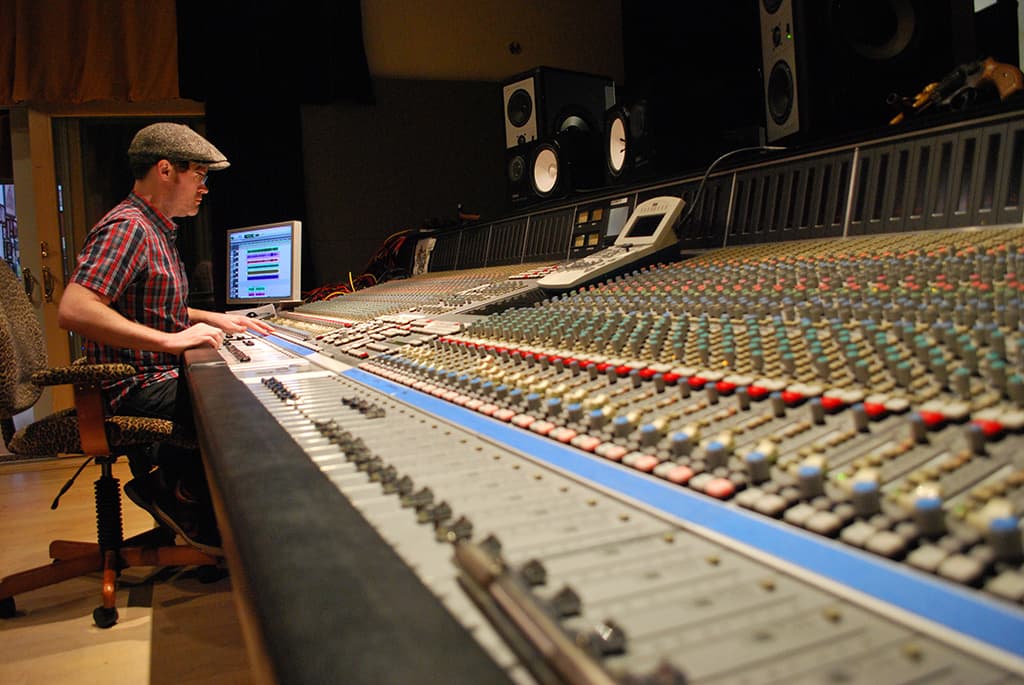
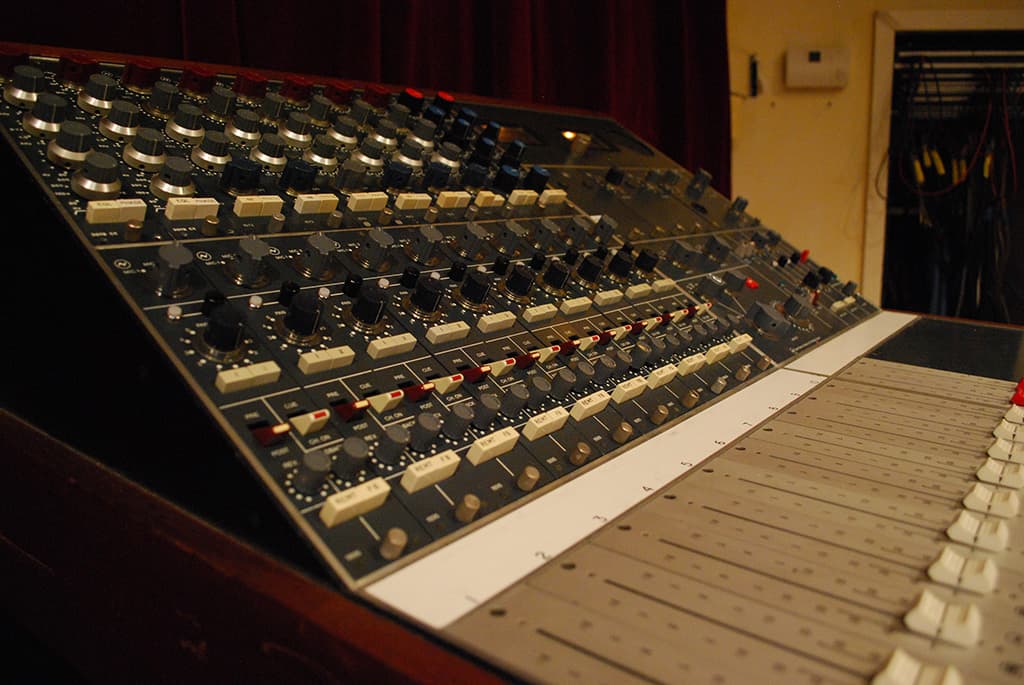
21ST CENTURY MIXING
AS: Chris Lord Alge mixed 21st Century. Did you converse or have much to do with him before he got hold of it?
CD: No. I don’t know what he likes actually, and frankly I don’t want to know. That way I can just do what I do, you know? There’s enough pressure knowing it’s going to him already! It’s like, ‘Shit, I’ve gotta make this sound good; I’m not gonna skimp on anything’. To know that he likes a particular mic on something would only drive me more nuts.
I was there for a lot of the mixes and hung out with him. I was doing some last-minute editing while they were mixing in the other room and he’s a fun guy to work with and talk shop with – like we’re doing now. I thought maybe I’d given him too many room mics – too much of the same thing – but he was really into what I gave him. He likes what I do, so it’s worked out great.
JINGLETOWN’S EQUIPMENT LIST
AS: Are you mostly recording straight into ProTools here?
CD: Yeah. Although the plan is to hopefully start using tape machines again [Jingletown has at least two Otari MTR-90 MkIIs]. We did on the last record with mixed results. It’s a funny thing; I’ve always been a fan and always wanted to utilise tape but on this last record we did a shootout and everybody chose the digital recording over the tape. I think the preference changes depending on the song too. These were fast songs where we needed transients and definition. On the slower stuff we ended up using tape for the drums and bass.
AS: When did you get the J-Series SSL?
CD: As soon as we got off the road from the The American Idiot tour. We were just kinda all living here at that stage and the Trident console that’s in the studio up the hall replaced an SSL 4k. In the control room we’re in here there used to be this tiny little digital board.

AS: So in terms of this place, is it your job to organise what gear goes in here?
CD: Yeah, pretty much. The guys have the ultimate say, of course – they’re the owners of the place after all. Anything that we get or install I put to them first and they say yes or no. We try and not go crazy, but again it certainly helps that they’re into the recording process – they love this place! You find some artists who really don’t care about the geeky stuff but we can geek out and talk about this stuff for hours!
AS: You mentioned the other day when we first spoke here that you’re going to open Jingletown to the public? I imagine that will change things a bit.
CD: Yeah! I’m pretty excited about it to be honest.
AS: What prompted that idea?
CD: Well, when the guys are on tour for 18 months at a time, and then take a break to decompress for a while the place basically sits idle. The option this time around was to either shut down the power, turn everything off and lock the place up again, or open it and, you know… let our friends from the Bay Area have access to it. There was a time when we were tracking the last record in LA that some friends of ours needed a studio but unfortunately we just weren’t set up. There was stuff everywhere here basically – amps and fancy guitars and stuff… that you don’t really want other people particularly having access to. It’s your own personal stuff, you know?
So we were sort of kicking ourselves at the missed opportunity for them and us. It would have been great to let our buddies in and use the place and get something out of it.
Before this place became a full-blown studio this was just our clubhouse you see. That room next door had probably twenty motorcycles in it, two of which were dismantled. The other room out there was the jam room and we even had cars out the front that we were working on. Now that we actually use most of the space for recording it’s a bit more of a business in here. That’s not to say it won’t turn into that again at some point…
Prior to us moving in here and setting up the clubhouse – when we were in here working on American Idiot as clients – we kind of commandeered the place. We got so comfortable here in fact that we even had go-kart races in the carpark… it was pretty insane.
AS: What?
CD: The go-kart races were amazing. You’re so close to the ground: you’re fast, you’re sliding… even the owner got involved. He’d bring all his interns out and make everyone move their cars and built these elaborate tracks.
Since it became Green Day’s clubhouse, we’ve always included some sort of fun into our work – some sort of release. We’re still doing that in here now with the motorcycles and everything. Everyone’s got a bike…


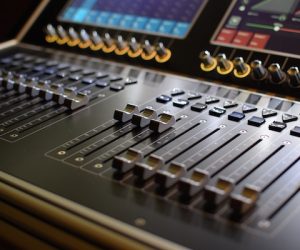




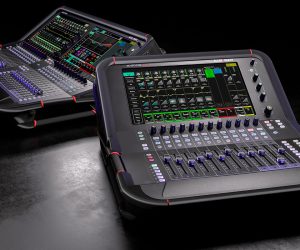

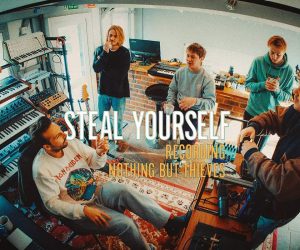






RESPONSES